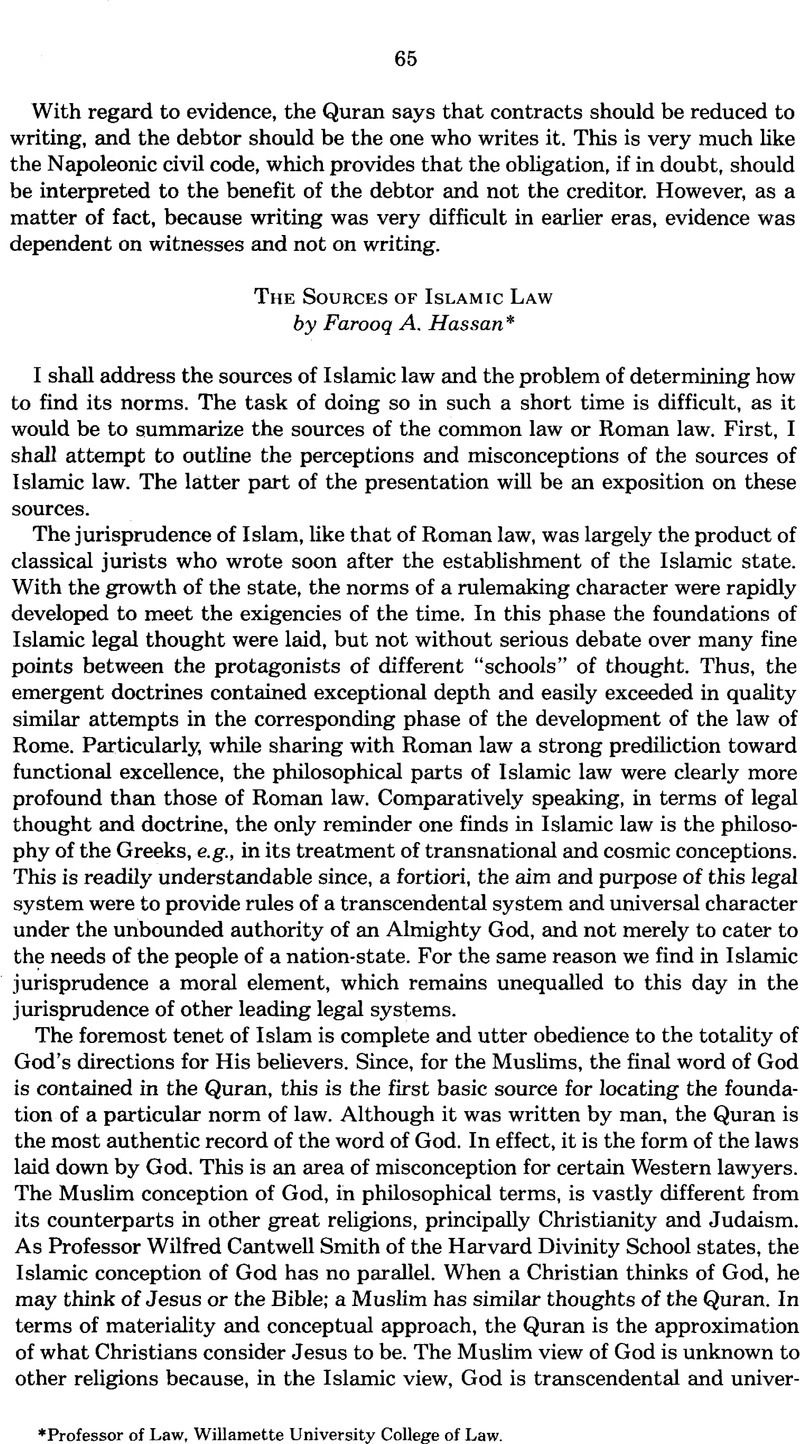Article contents
The Sources of Islamic Law
Published online by Cambridge University Press: 28 February 2017
Abstract

- Type
- Islamic Law
- Information
- Copyright
- Copyright © American Society of International Law 1982
References
1 A jurist is, therefore, called “fagih.” “Ilm,” when used in juristic discussions, signifies knowledge and a learned man is called “alim.” But for an alim to be a “gigih” he must also possess knowledge and judgement to deduce and find the appropriate rule of law from the shariah.
2 1 Taptazani, Talwihi 10 (1327 A.H.) (margin).
3 S. Mahmassani, Philosophy of Jurisprudence of Islam 8 (1961).
4 See Shahrastani, 155.
5 M. Ostborog, the Angora Reform 21 (1927); F. Tyabji, Mohammadan Law 18 (3d ed. 1940); A. Wensinck, Early Modern Traditions 156; M. Khadduri, Law of War and Peace in Islam 28 (1955).
6 Shahrastani, 160-61; Ibn-Khaldun, Mugaddamah, 372 (F. Rosenthal transl. 1958).
7 S. Mahmassani, supra n. 3, at 76.
8 A. Wensinck, Muslim Creed 113.
9 See generally F. Hassan, the Concept of State and Law in Islam (1981), particularly ch. 5. There I argue that the key to meet the newly emergent situations is indeed ijtihad. It is the process through which the evolution of the eternal law can meaningfully take place.
10 The use of these sources are chiefly used by the Hanafi school. These verses of the Quran are usually cited to support such views: XXXIX: 18 and XXIX: 54-59.
11 J. Schacht, Origins of Mohammadan Jurisprudence 99 (1950).
12 Nizam Khan v. Additional District Judge, 1976 Pak. L. D. Lah. 930. See also the present author's analysis of this case: The Content of the Residuary Law of Pakistan, Law and Society 23 (1977). At 1976 Pak. L.D.Lah. 1011 the court observed:
13 His Risala has been translated into English by M. Khadduri, as Islamic Jurisprudence (1961).
14 Some modern researchers, however, do not entirely accept all the hadith accounts.
15 Nawawi, 93, 95-6.
16 11 Ibn-Khallikan supra n. 6, 231.
17 Translated by M. Khadduri into English as the Islamic Law of Nations (1966).
18 See, e.g., H. Kelsen, Principles of International Law 307-11 (1952).
19 All independent states are recognized as juridically equal. For example, Article 4 of the Convention on the Rights and Duties of States of 1933 says “states are juridically equal… .“
20 See generally Starke, Monism and Dualism in the Theory of International Law, 17 Brit Y.B. 66 (1936); 1 J. Verzijl, International Law in Historical Perspective 90-183 (1968); van Panhuys, Relations and Interactions between International and National Scenes of Law, 112 Recueil Des Cours 1 (1964); Quadri, Cours General de Droit International Public, 113 id. 237, 280-318 (1966); 1 H. Lauterpacht, International Law: Collected Papers 151-77 (E. Lauterpacht ed. 1970).
21 See e.g., C. Fenwick, International Law 30 (3d ed. 1934).
22 See Vienna Convention on the Law of Treaties, May 22, 1969, art. 42, 63 AJIL 875 (1969), 8 ILM 679 (1969); A. Mcnair, Law Of Treaties, ch. 30 (1961).
23 See U. N. Charter, arts. 33-38.
24 See 12 Digest of International Law 1-495 (M. Whiteman ed. 1971); I. Brownlie, International Law and the Use of Force (1963).
25 Abdel-Wahab, Meaning and Structure of Law in Islam, 16 Vand. L. Rev. 116 (1962).
26 W. Friedmann, the Changing Structure of International Law 80 (1964).
27 Habachy, Property, Right and Contract in Muslim Law, 62 Colum. L. Rev. 461 (1962).
28 Id. at 465.
29 Id. at 467.
30 The early Islamic period witnessed many such treaties.
31 James Brown Scott referred to Francisco de Vitoria as the founder of international law. J. Scott, Discovery OF America and its Influence on International Law 7.
32 40 Jahrbucher Der Literatur 48 (1827).
- 2
- Cited by


